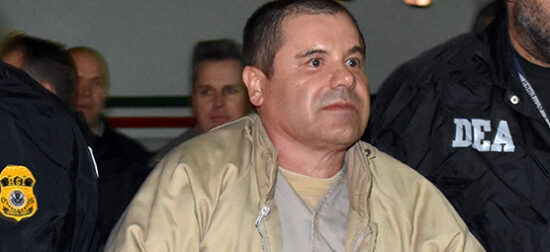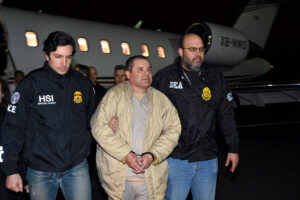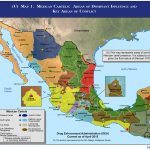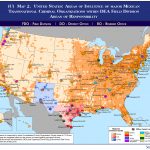‘El Chapo’ extradited to United States
Mexican drug cartel kingpin faces charges in New York

Joaquin “El Chapo” Guzman, one of the most powerful and violent Mexican drug cartel bosses in history, has been extradited to the United States to face murder, drug trafficking and other charges.
Guzman, 59, was being held in Cuidad Juarez, near the Texas border, when a Mexican judge denied the drug lord’s legal efforts to prevent the extradition. Mexican officials put him on a plane Thursday, January 19, and flew him to Long Island MacArthur Airport in Islip, New York. He is being held in a Manhattan jail, and will be prosecuted in Brooklyn.
As a condition of the extradition, he faces a maximum sentence of life in prison.
Charges against Guzman were pending in seven different federal court districts across the United States, but the Justice Department decided to prosecute him in New York first. On Friday, he pleaded not guilty to 17 counts of murder, drug trafficking, money laundering and kidnapping.
The extradition comes after Guzman executed two dramatic escapes from Mexican detention facilities, the first in 2001 and the second in 2015. Before the second escape, Mexican officials had resisted U.S. extradition.
In the 2001 escape, Guzman climbed into a laundry cart and was rolled out the front door, where he got into the trunk of a waiting car. He was caught again in 2014 at a beachfront hotel in Mazatlan.
But on July 11, 2015, Guzman escaped from the Altiplano federal prison after his men built an elaborate tunnel that allowed the drug lord to casually descend a ladder that led from a drainage basin in his cell. At the bottom of the ladder he hopped onto a specially modified motorcycle and rode it nearly a mile away from the prison through a lighted tunnel. He climbed another ladder, met up with his friends, hopped into an airplane and flew to freedom.

Authorities estimate Guzman spent $50 million to build the underground escape route and to bribe officials to turn their heads during its construction.
Six months later, on January 8, 2016, Mexican authorities caught Guzman in his home state of Sinaloa. Guzman’s henchmen exchanged gunfire with Mexican marines while Guzman fled into the sewers. He climbed to street level through a manhole cover, carjacked a motorist and took off down the freeway. Police eventually caught up with the car and arrested Guzman.
Authorities learned of Guzman’s whereabouts thanks to the drug lord’s meeting with Mexican actress Kate del Castillo and American actor Sean Penn. Penn was seeking out Guzman in order to interview him for a magazine article on the drug war.
According to the New York Times, the decision to prosecute Guzman in New York was met with a “tinge of regret” in Chicago, where his Sinaloa cartel had dominated the local drug trade and contributed to the city’s epidemic-level drug use and high gang-related murder rate. Chicago officials acknowledged that Guzman’s prosecution is important, but that it may have little impact on the flow of drugs into Chicago and across the United States.
The Mob Museum had a model of Guzman’s escape on display from March-September of 2016 in its temporary exhibit space. The model can still be seen on the Museum’s first floor.
Feedback or questions? Email blog@themobmuseum.org







